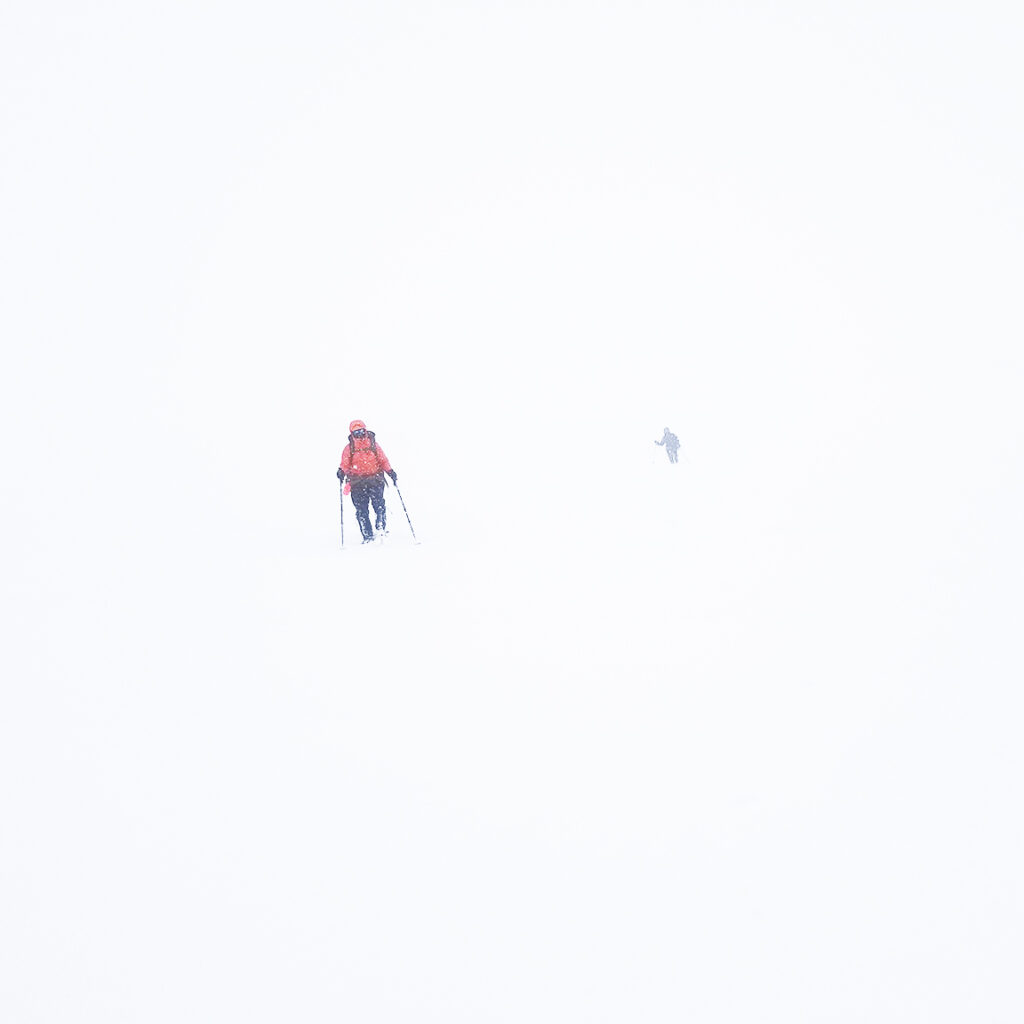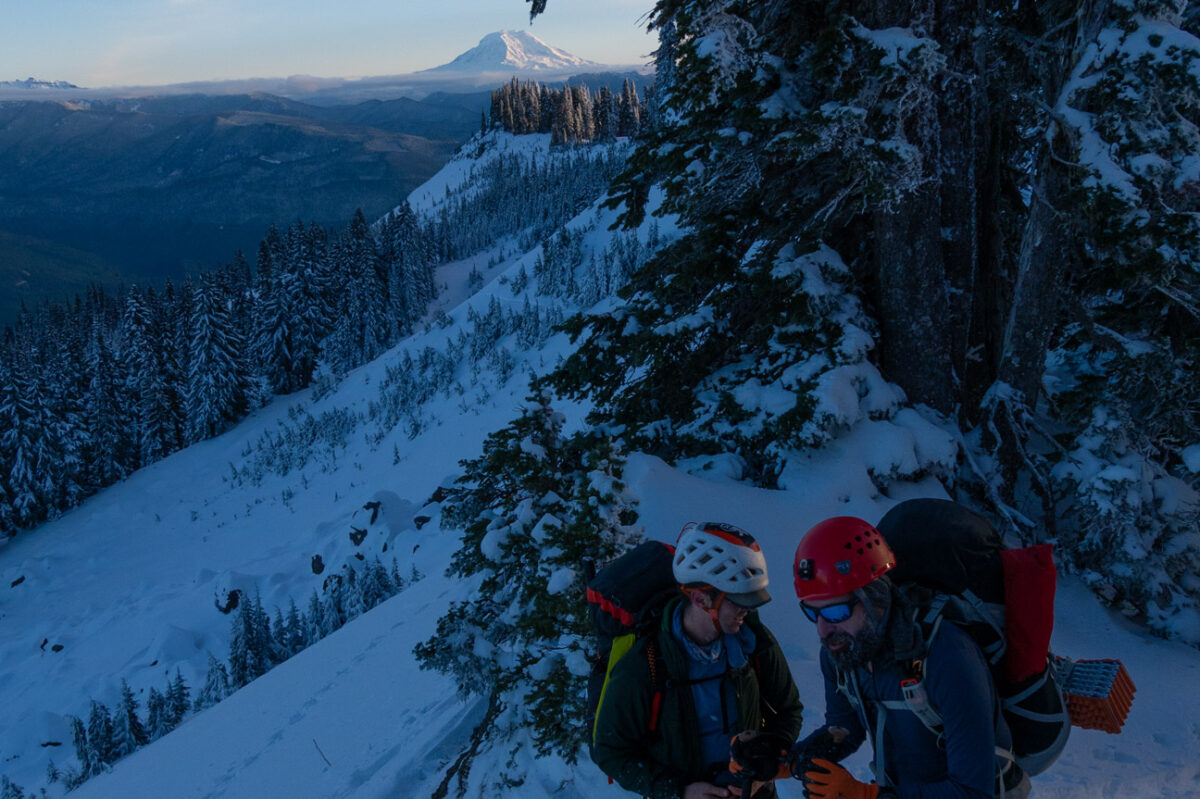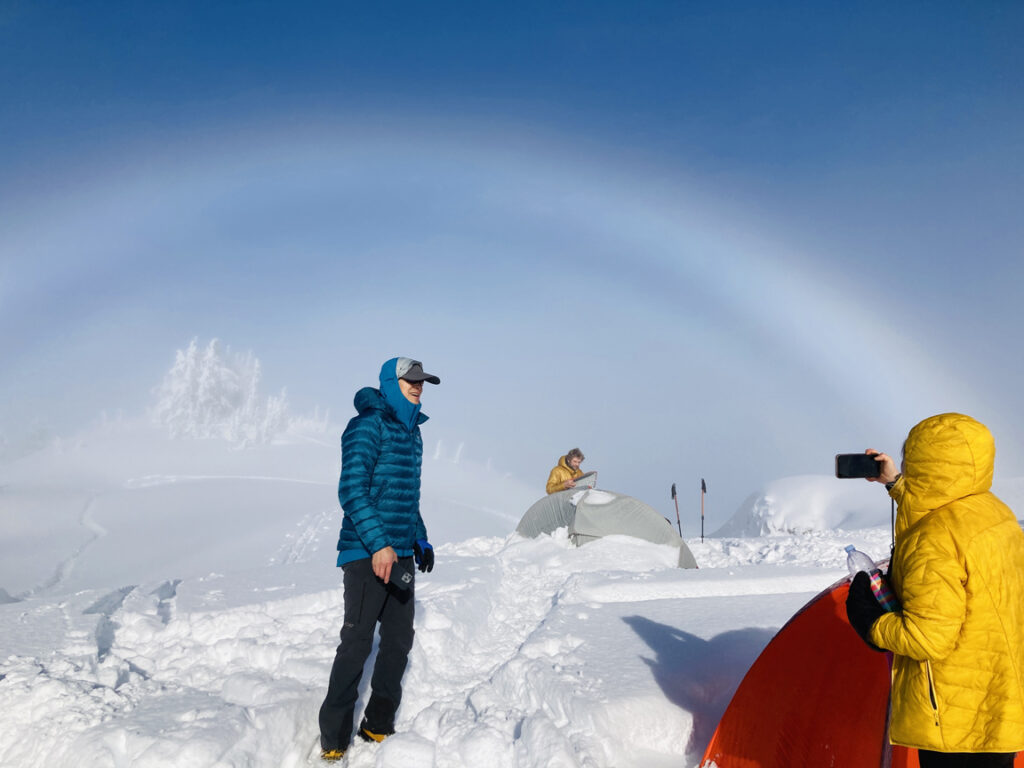Anytime you are spending hours on large snow fields or glaciers, especially in the spring and summer, you are at risk of severe sunburns from reflected sunlight. Snow and ice can reflect up to 80% of UV rays. Exposure is increased at high altitudes where the thinner atmosphere offers less protection. The risk exists even in cloudy conditions.
I don’t represent any brands or receive any financial benefits from any of the gear I recommend on this website. All gear reviews and recommendations are personal and free from influence. I also don’t use any affiliate links.

In Washington State, intense sunburns and eye injuries are common during the summer on popular routes, such as Camp Muir and the South Climb of Mount Adams.
Sunburn Prevention
The goal is to cover exposed flesh and protect the eyes completely. Avoid short-sleeved shirts and short pants. Reflected UV rays can burn you where you least expect it such as on the bottom of your nose and upper lip. Wearing a sun hat does not protect your face from the UV rays reflecting up from the snow.


